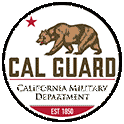Grizzly Flag
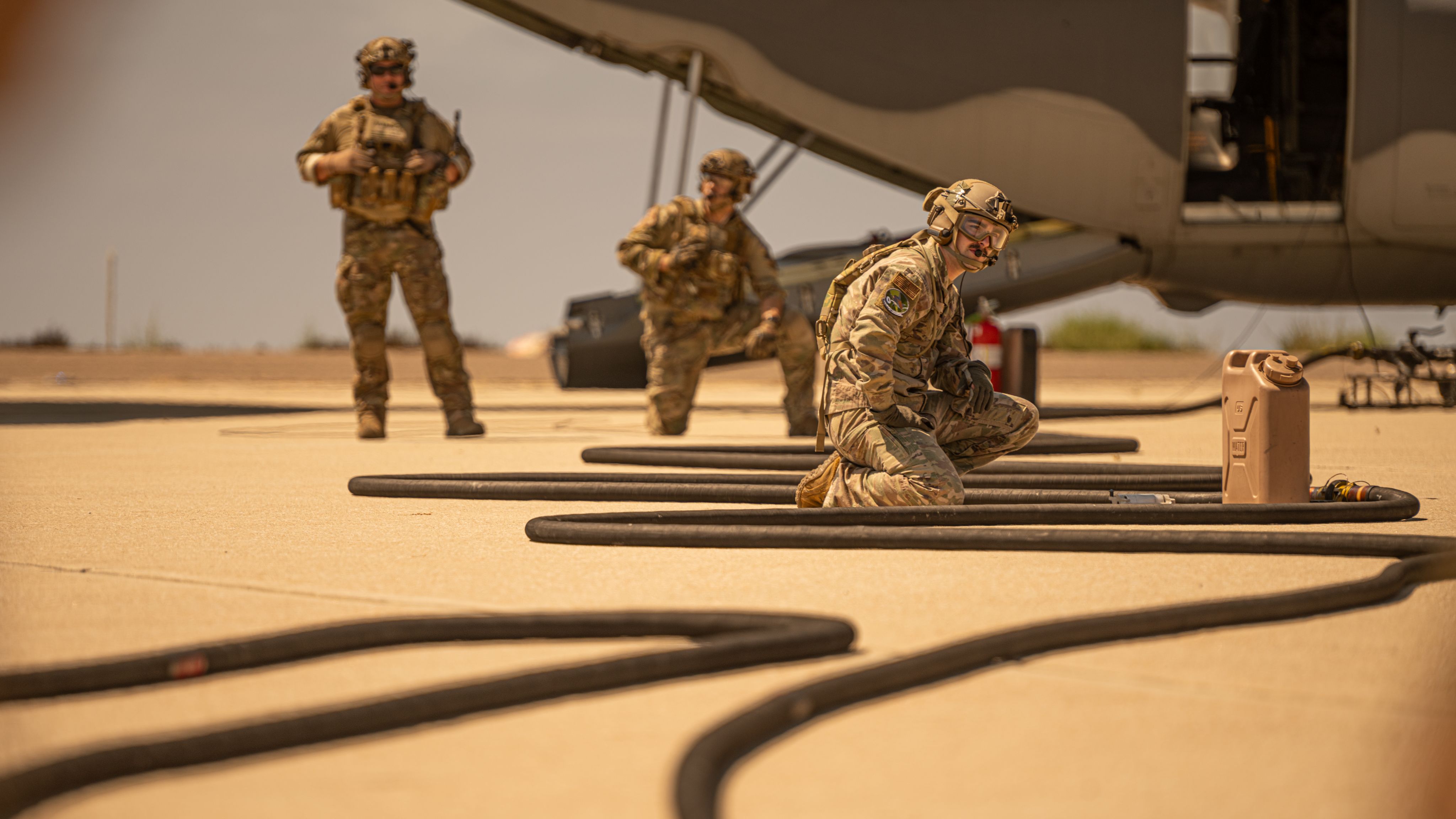
Story by U.S. Air Force Lt. Col. Tawny Dotson, Staff Sgt. Joseph Pagan, Master Sgt. Charles Vaughn, and Master Sgt. Dave Loeffler
California Air National Guard Public Affairs
September 14, 2023
SACRAMENTO, Calif.,— Airmen from all five wings in the California Air National Guard came together at March Air Reserve Base and San Clemente Island, Calif., for the Grizzly Flag exercise demonstrating Agile Combat Employment at an austere location Sept. 6 through 12.
“We replicated a scenario where we are operating out of a main base and receive intel that we need to get out of the location quickly. The participants packed up and shipped out with everything necessary to set up and operate in an austere location,” said Col. Aimee Howard, who served as the exercise’s commander of the Air Expeditionary Wing.
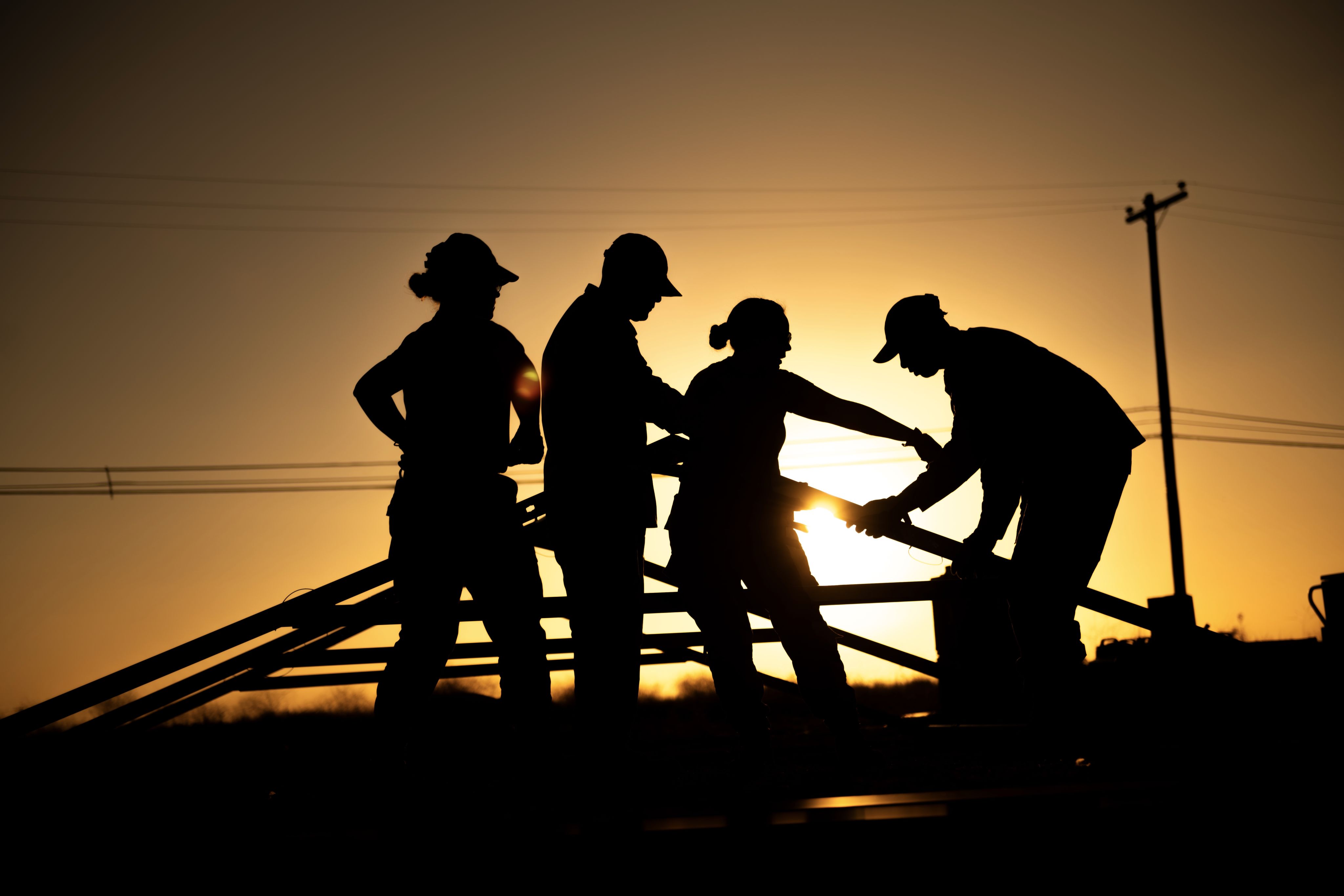
California Air National Guard Civil Engineers build tents on San Clemente Island to prepare for the Grizzly Flag exercise. (U.S. Air National Guard photo by Staff Sgt. Joseph Pagan
California Air National Guard Civil Engineers build tents on San Clemente Island to prepare for the Grizzly Flag exercise. (U.S. Air National Guard photo by Staff Sgt. Joseph Pagan
During the exercise the 50-member contingent was expected to demonstrate the ability to perform in their duty Air Force Specialty Code and in additional AF specialties to further the ability for all participants to be multi-capable Airmen.
As exercise injects were provided, Airmen were forced not just to do their job, but to contribute to other roles as well to simulate a real-world environment where there are limited resources to accomplish the mission.
Transportation professionals were trained to support medical professionals and all Airmen on the island supported Civil Engineering in building tents that provided both lodging and space to operate.
"We are empowering our Airmen to think about ways they can solve problems."
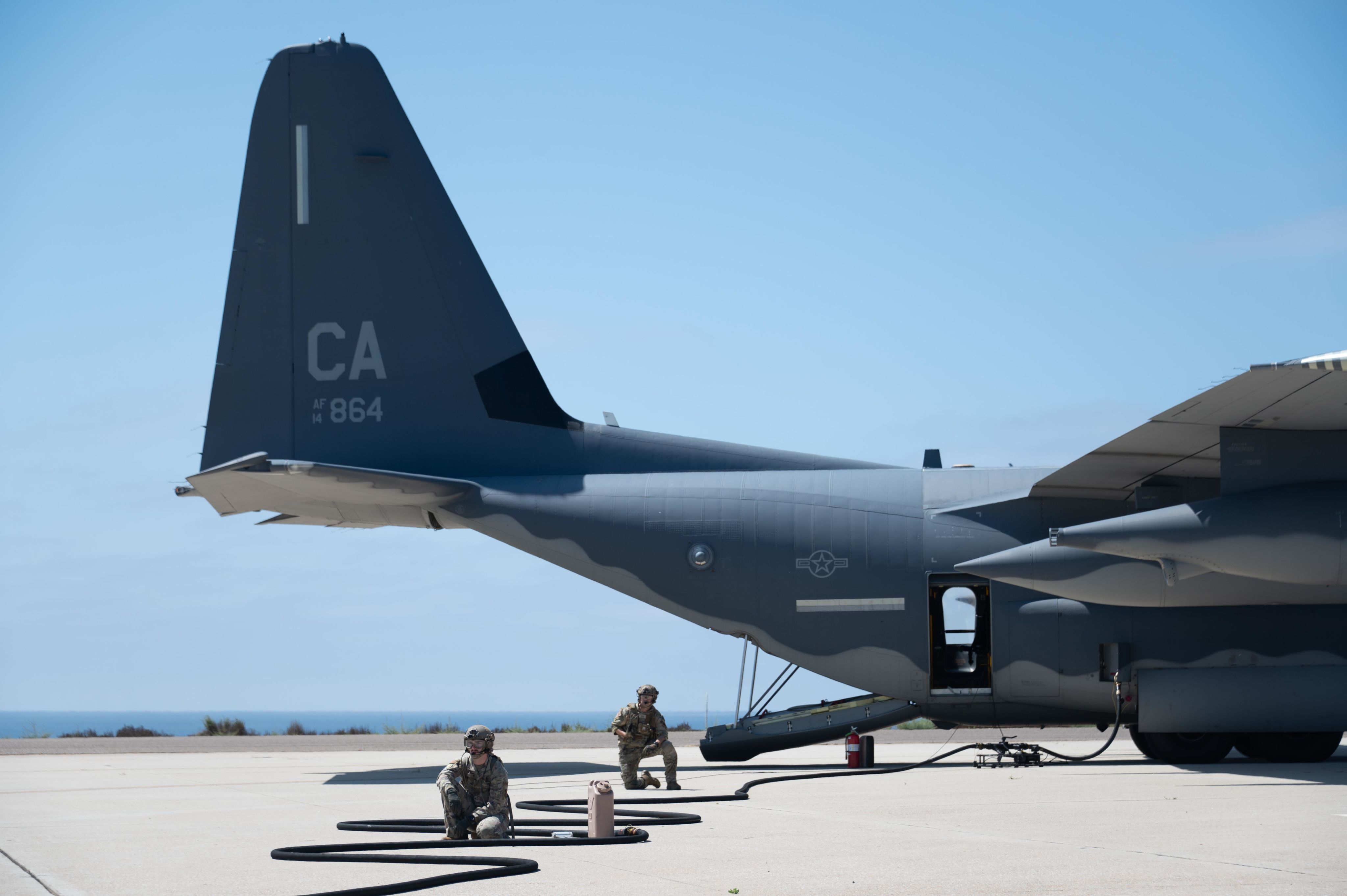
Airmen from the 130th Rescue Squadron standby for the MQ-9 Aircraft refuel on the Naval Auxiliary Landing Field on San Clemente Island. (U.S. Air National Guard photo by Staff Sgt. Duane Ramos)
Airmen from the 130th Rescue Squadron standby for the MQ-9 Aircraft refuel on the Naval Auxiliary Landing Field on San Clemente Island. (U.S. Air National Guard photo by Staff Sgt. Duane Ramos)
During the exercise Airmen from the 335th Logistics Readiness Squadron on a C-130 completed FARP with Airmen from the 163d Attack Wing with an MQ-9 refining the ability for the two units to support each other.
“We know that the threat is coming with our near-peer adversaries, and we are ensuring we are maintaining a full level of readiness to keep the adversary thinking – not today,” said Col. Howard.
“We will absolutely continue this kind of training. We are empowering our Airmen to think about ways they can solve problems. This prepares our Airmen to think about solving problems in a different way, in a field environment where they may not have all the tools they would expect," Howard said.
"Defending the homeland is priority number one."
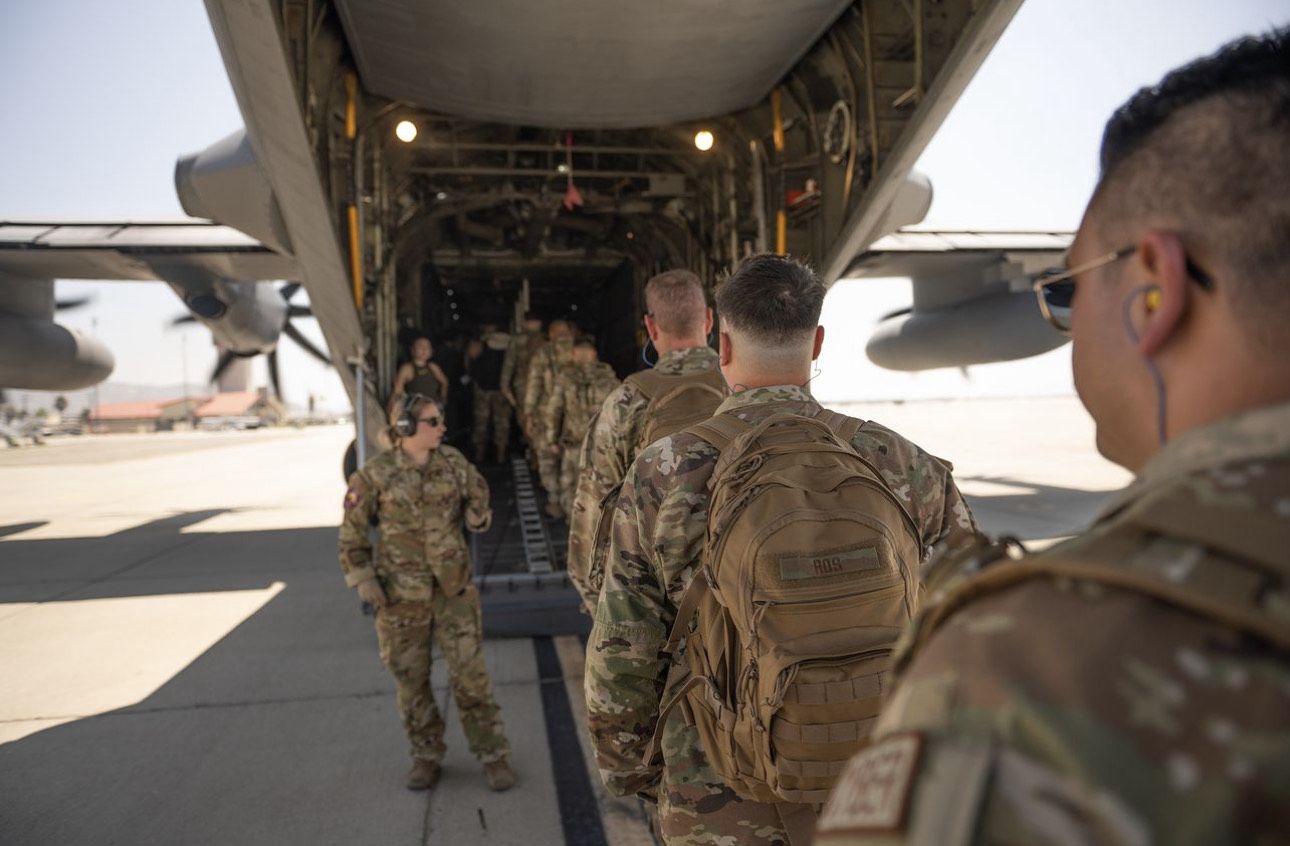
California National Guard Airmen board a C-130 Aircraft at March Air Reserve Base, Calif., bound for San Clemente Island. (U.S. Air National Guard photo by Staff. Sgt. Joseph Pagan)
California National Guard Airmen board a C-130 Aircraft at March Air Reserve Base, Calif., bound for San Clemente Island. (U.S. Air National Guard photo by Staff. Sgt. Joseph Pagan)
“The idea is to leave the hub, at March Air Reserve Base, and to operate at the spoke, San Clemente Island, without missing a heartbeat. This demonstrates our ability to keep the adversary moving and being unpredictable with where we are going," Howard said.
The exercise employed a hub and spoke design where Airmen convened before forward deploying a contingent to San Clemente Island where they established base operations, simulated a contested environment, refueled aircraft, created security perimeters, and completed training objectives across the spectrum of operations.
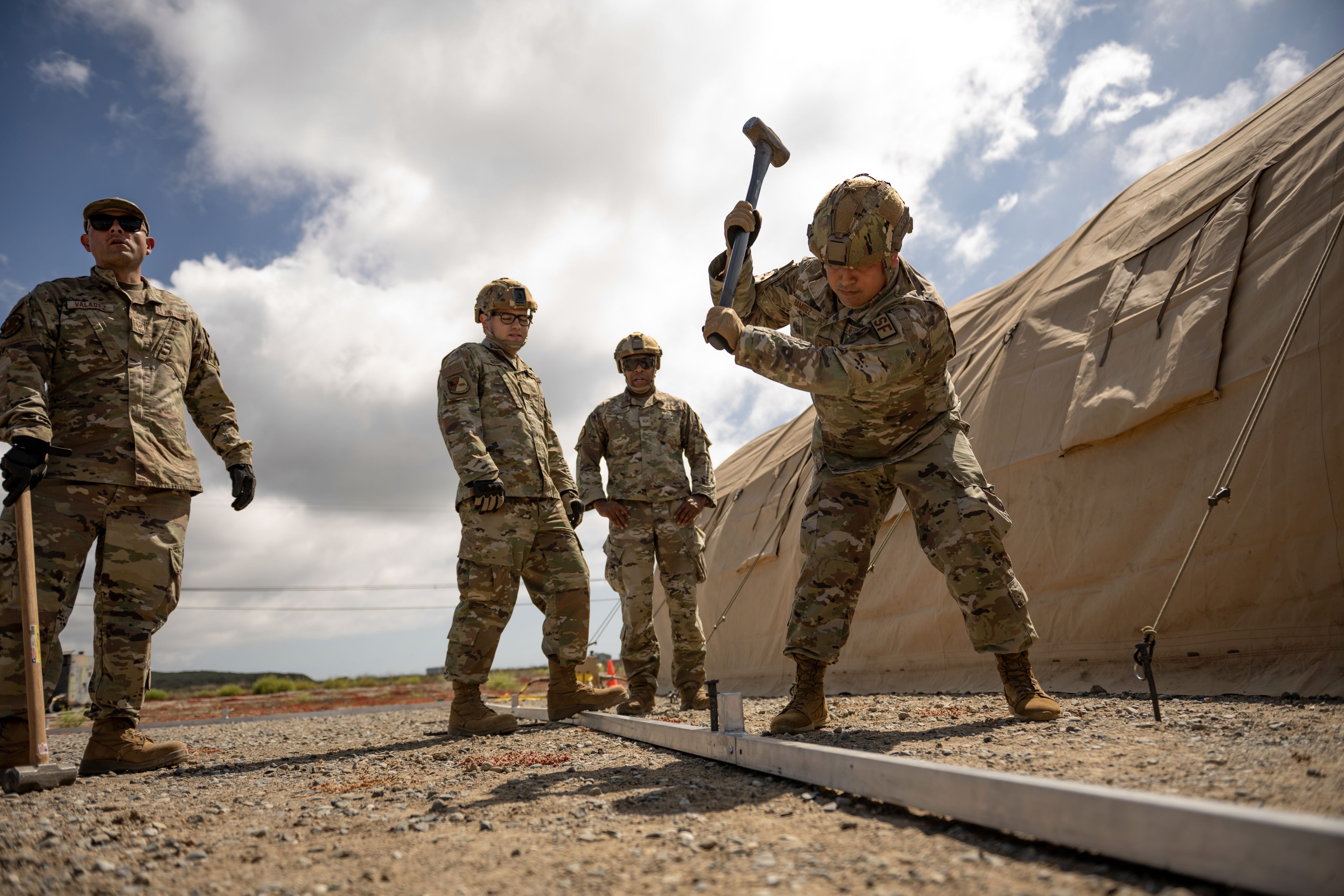
Security Forces Airmen assist Civil Engineer Airmen with building tents ahead of the Grizzly Flag exercise. (U.S. Air National Guard photo by Staff. Sgt. Joseph Pagan)
Security Forces Airmen assist Civil Engineer Airmen with building tents ahead of the Grizzly Flag exercise. (U.S. Air National Guard photo by Staff. Sgt. Joseph Pagan)
As the United States continues to focus on the Indo-Pacific Region, California’s Air National Guard units are positioned to support the continued defense of our nation and have the training necessary to meet any challenge.
“Defending the homeland is priority number one,” said Brig. Gen. Steven Butow, commander of the California Air National Guard. “In this regard, Grizzly Flag was a first step toward exercising the agility of our Airmen in a realistic scenario that strengthens the California Air National Guard’s contribution to our national defense.”
The ability to operate amongst all five California ANG wings was demonstrated throughout.
That interoperability was demonstrated when forward area refueling point operations were completed with a C-130 and an MQ-9.
FARP is a specific skill within the petroleum, oils, and lubrication career field where Airmen learn to refuel aircraft on the ground when air-to-air refueling is not possible, at austere locations, and in a contested environment.
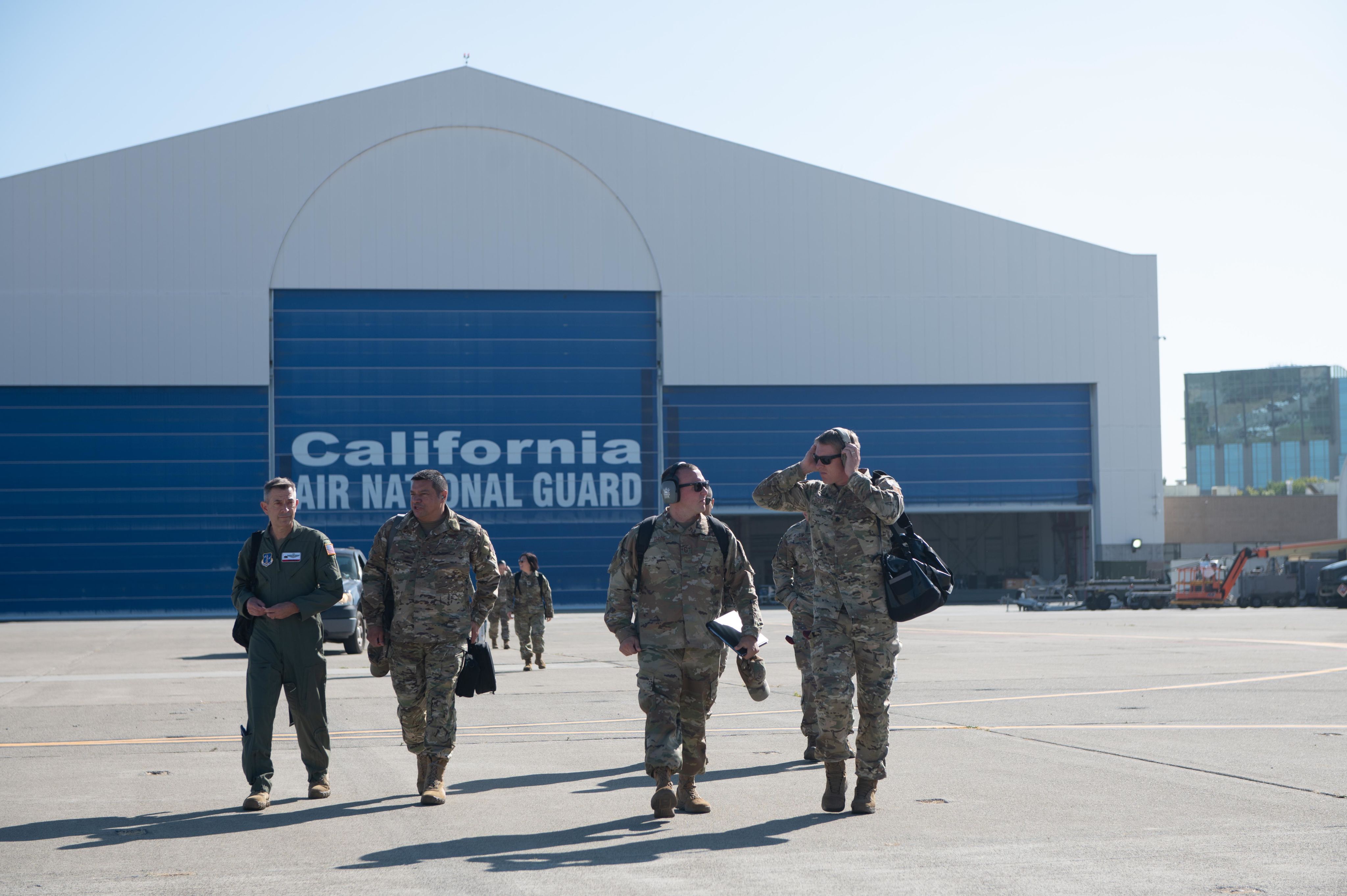
Air Force Brig. Gen. Steven J. Butow, Commander of the California Air National Guard, accompanied by Col. Victor Teal, Commander of the 129th Rescue Wing, board a flight at the 129th Rescue Wing to attend the Grizzly Flag exercise as distinguished visitors. (U.S. Air National Guard photo by Staff Sgt. Duane Ramos)
Air Force Brig. Gen. Steven J. Butow, Commander of the California Air National Guard, accompanied by Col. Victor Teal, Commander of the 129th Rescue Wing, board a flight at the 129th Rescue Wing to attend the Grizzly Flag exercise as distinguished visitors. (U.S. Air National Guard photo by Staff Sgt. Duane Ramos)
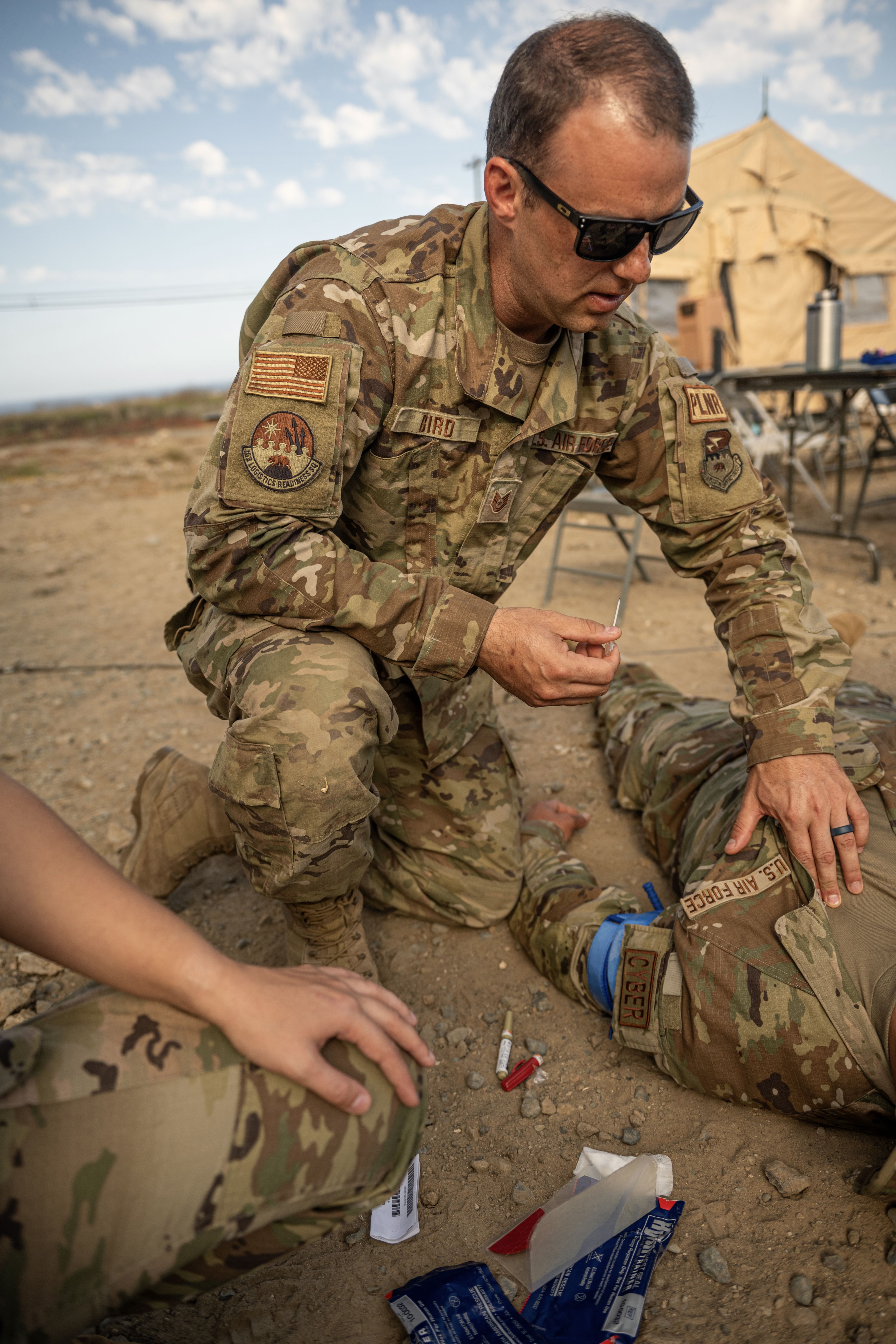
Tech. Sgt. Von Bird, a logistics planner assigned to the 163d Attack Wing, identifies the proper placement of needle chest decompression on a fellow service member. (U.S. Air National Guard photo by Staff Sgt. Joseph Pagan
Tech. Sgt. Von Bird, a logistics planner assigned to the 163d Attack Wing, identifies the proper placement of needle chest decompression on a fellow service member. (U.S. Air National Guard photo by Staff Sgt. Joseph Pagan
In order to complete the exercise, a fully functional communication system needed to be established when the participants arrived on site.
“We set up communication fly-away kits to establish communication channels,” said Staff Sgt. Jared Haux, 144th Communications Flight. “It was a challenge to set up our equipment at first. There was a learning curve, but once we got it down we got it down pretty good.”
Once communications were established, Airmen like Haux were able to support other functions.
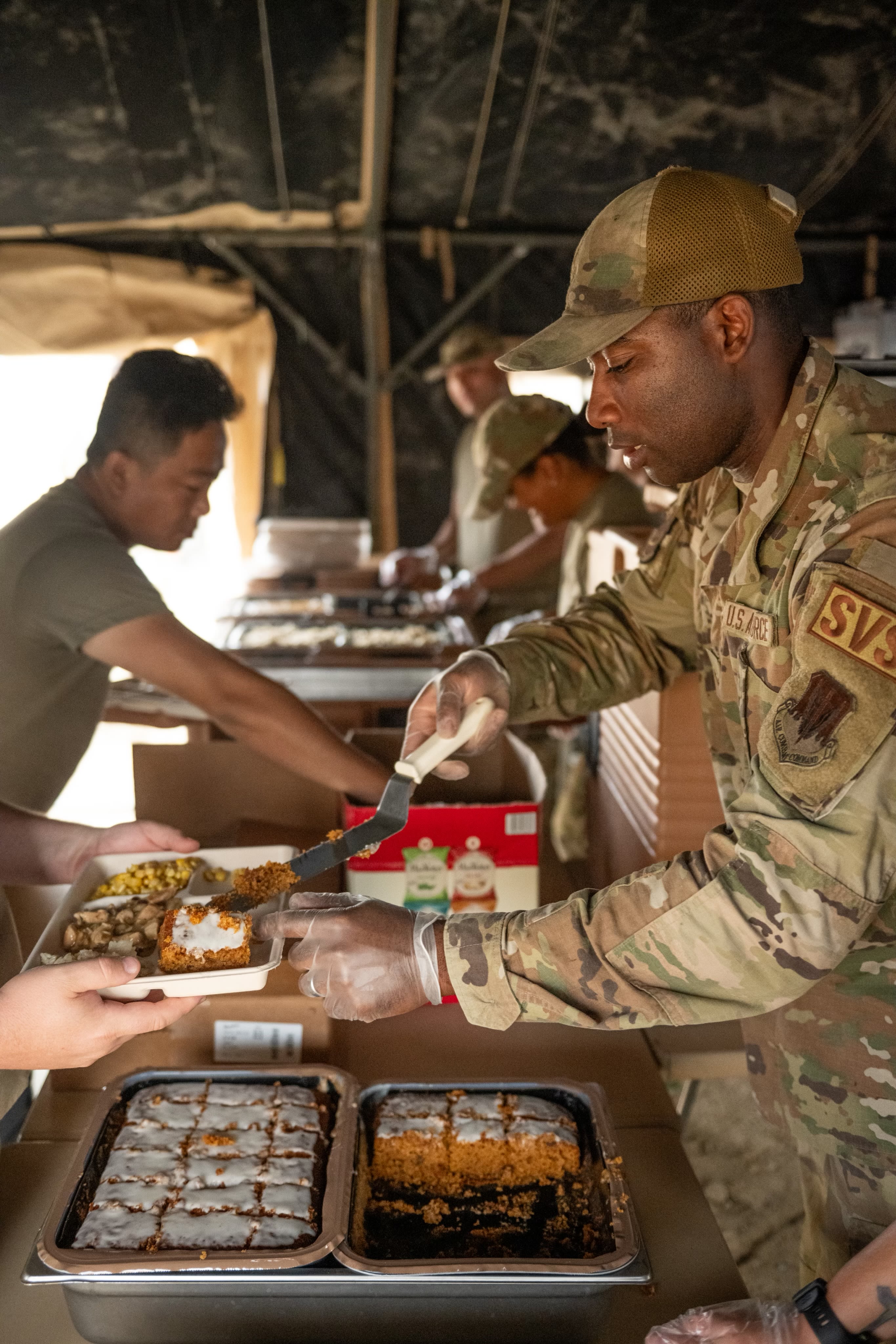
Airman 1st Class Tristan Jones, a force support specialist from the 163d Attack Wing, portions unitized group rations to fellow service members. (U.S. Air National Guard photo by Staff Sgt. Joseph Pagan)
Airman 1st Class Tristan Jones, a force support specialist from the 163d Attack Wing, portions unitized group rations to fellow service members. (U.S. Air National Guard photo by Staff Sgt. Joseph Pagan)
The Grizzly Flag exercise planning started in January of this year. In just under nine months, the CA ANG was able to execute the plan and intends to complete a larger version of the exercise next year.
“The end result for me is everyone working as a team and learning the skillsets from other jobs, how important they are, and how they can add that skill into their own daily role,” said Lt. Col. Scott McClellan, who served as the Air Expeditionary Squadron Commander for the exercise. “Participants’ attitudes have been incredible, work ethic was amazing, and everyone had a lean forward mentality striving to get the mission done.”
Medics from the 163d Medical Group participating in the exercise trained others on the signs and symptoms of cardiac arrest in addition to how to manage it and resuscitate victims.
“The more people we have trained, the more lives we can save whether it be in a civilian environment or while deployed,” said Staff Sgt. Sean Strayer, a medic with the 163d Medical Group
"The more people we have trained, the more lives we can save."
“People can get a lot out of this. If these Airmen are ever asked to augment the hospital, they will be more equipped to help patients.”
Keeping the mission moving required providing food to participants as well.
“I’m used to cooking in a traditional dining facility, being out here with limited resources and having to adapt and overcome was a challenge in itself,” said Senior Airman David Valdez, 163d Force Support Squadron.
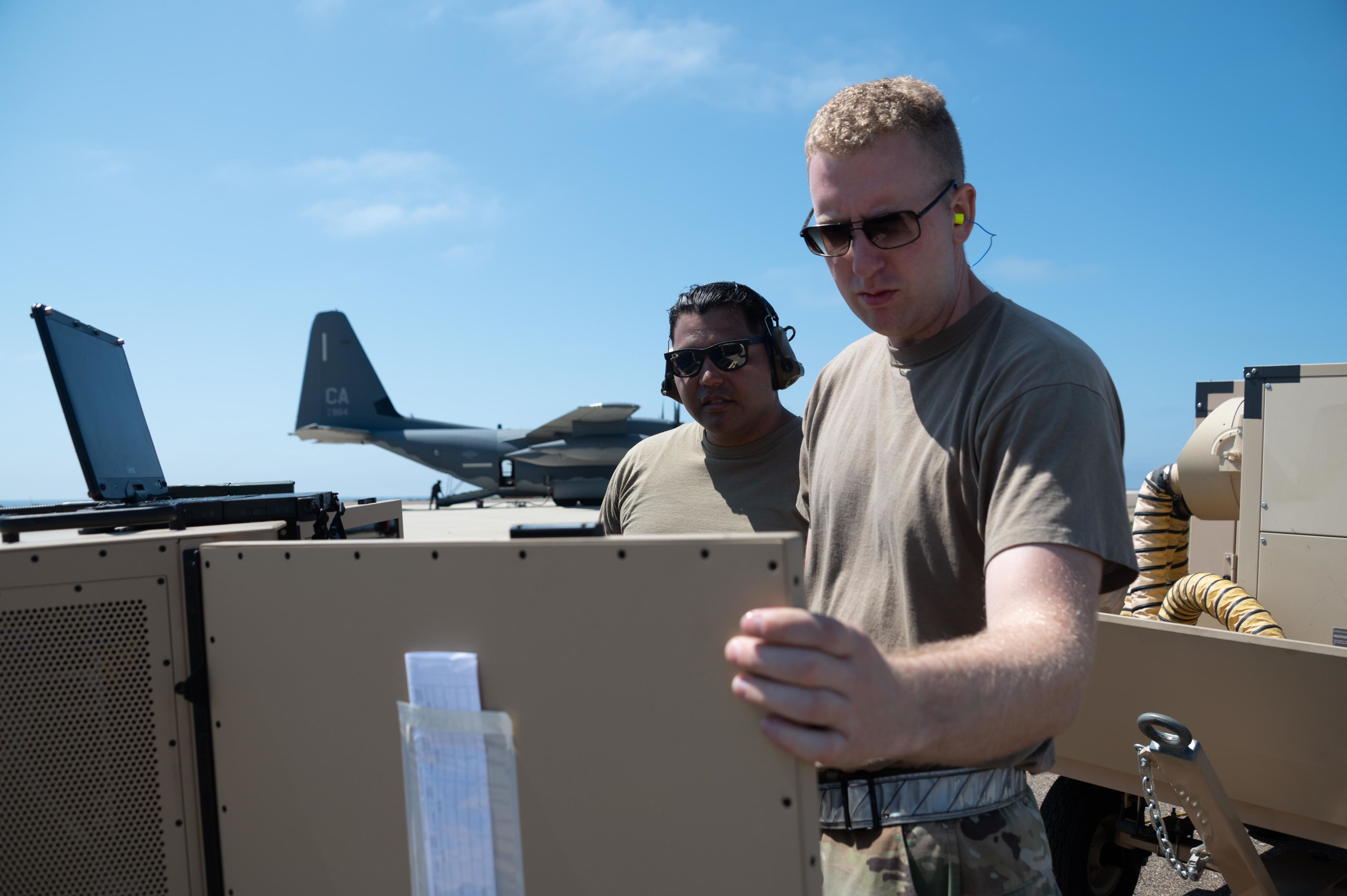
Airmen assigned to the 163d Attack Wing monitor and calibrate settings for the MQ-9 aircraft on the Naval Auxiliary Landing Field on San Clemente Island. (U.S. Air National Guard photo by Staff Sgt. Duane Ramos)
Airmen assigned to the 163d Attack Wing monitor and calibrate settings for the MQ-9 aircraft on the Naval Auxiliary Landing Field on San Clemente Island. (U.S. Air National Guard photo by Staff Sgt. Duane Ramos)
“Personally, I learned a lot outside of my career field,” said Haux. “I learned a lot about the jobs and responsibilities of the civil engineers, I learned a lot about radio and radio frequencies. I even got to go into more of my own career field. This whole experience was pretty cool. I’m very interested to see how it progresses in the future.”
Keeping the mission moving required providing food to participants as well.
“I’m used to cooking in a traditional dining facility, being out here with limited resources and having to adapt and overcome was a challenge in itself,” said Senior Airman David Valdez, 163d Force Support Squadron.
But participants left with high spirits.
“Everyone from different squadrons came together and completed tasks that they don’t normally do in order for this exercise to be a successful exercise,” said Valdez.
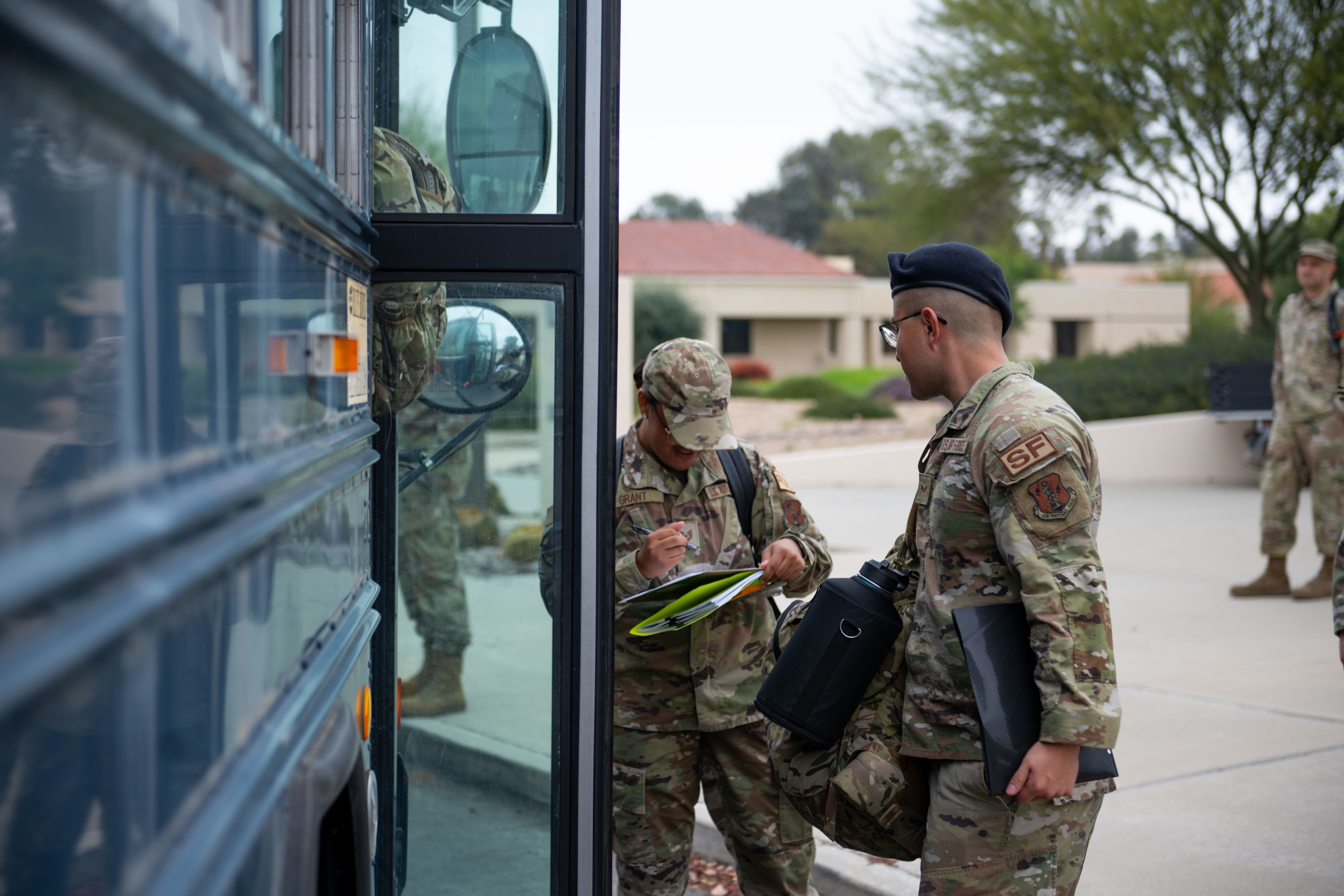
An Airman assigned to the 163d Attack Wing Deployment Office performs an accountability check as Airmen from the California National Guard bound for Grizzly Flag board a military transport bus at March Air Reserve Base. (U.S. Air National Guard photo by Staff Sgt. Joseph Pagan)
An Airman assigned to the 163d Attack Wing Deployment Office performs an accountability check as Airmen from the California National Guard bound for Grizzly Flag board a military transport bus at March Air Reserve Base. (U.S. Air National Guard photo by Staff Sgt. Joseph Pagan)
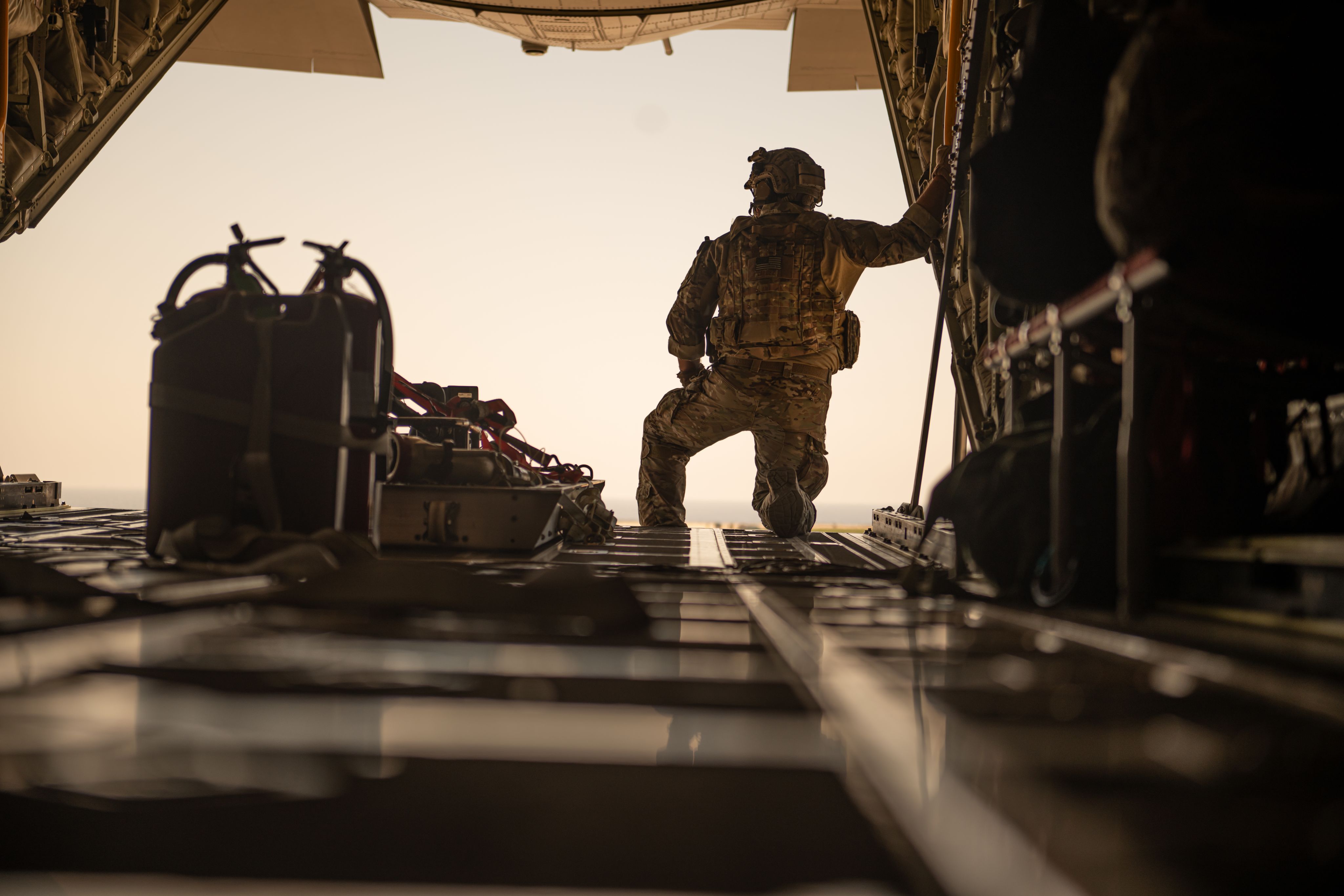
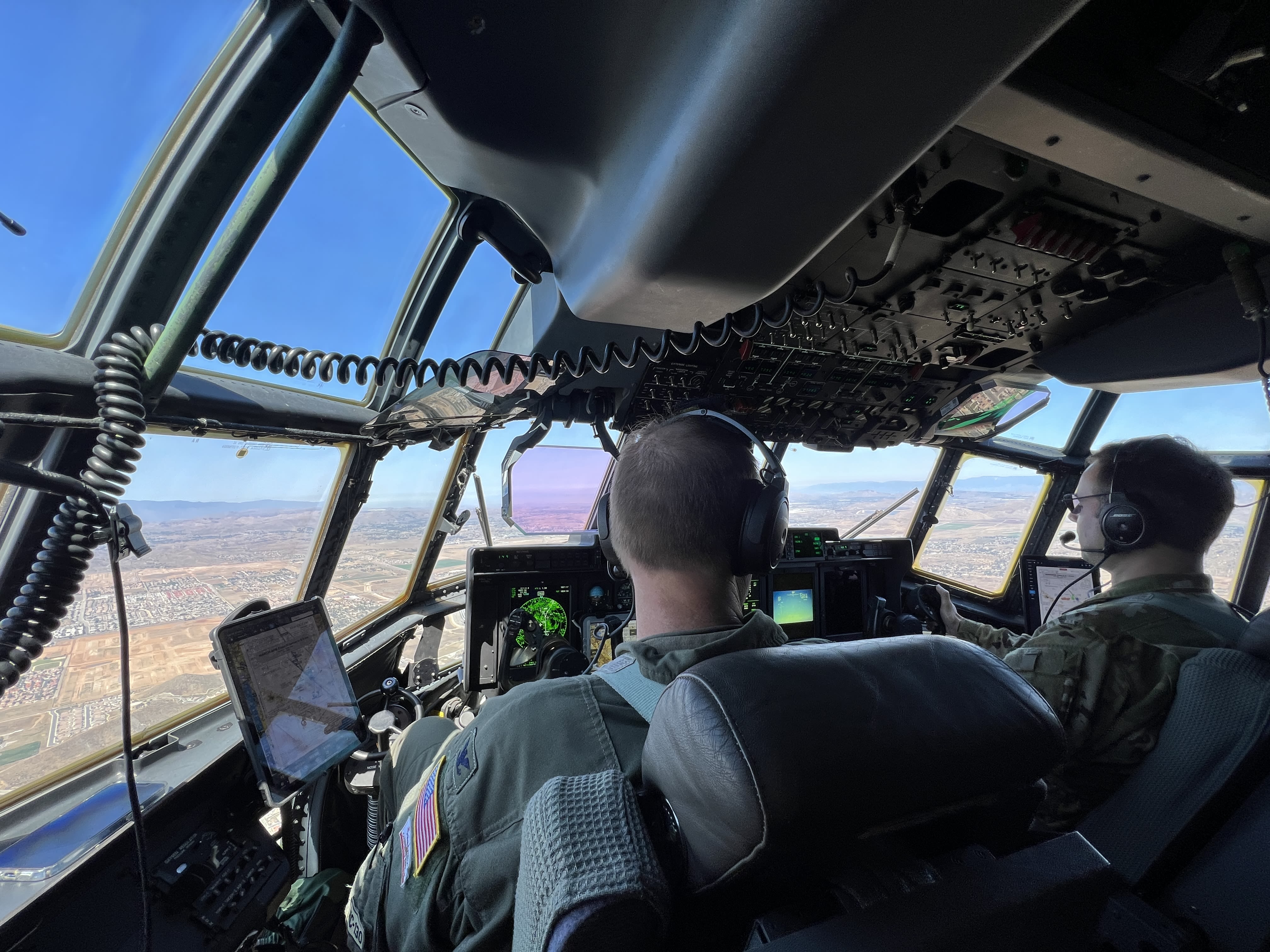
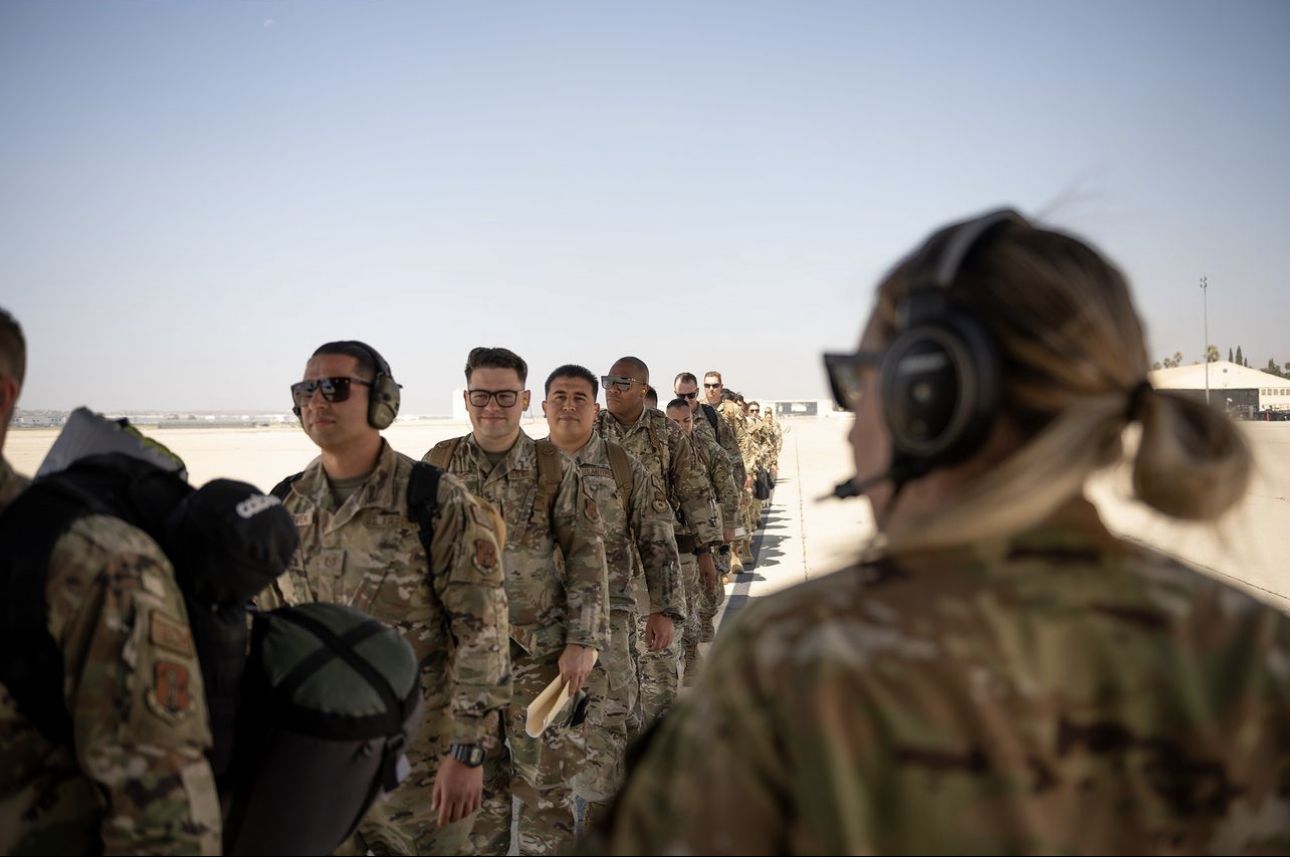
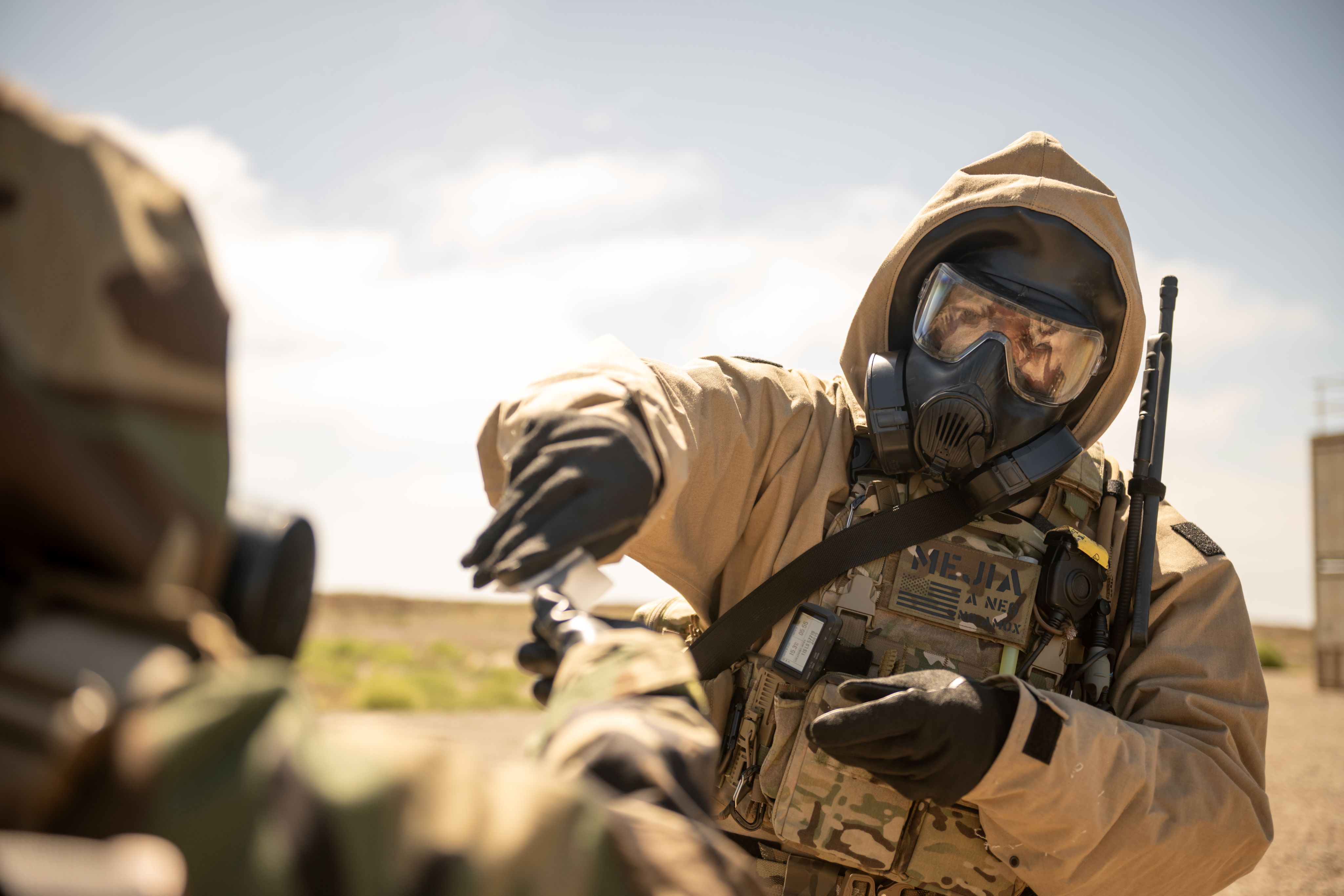
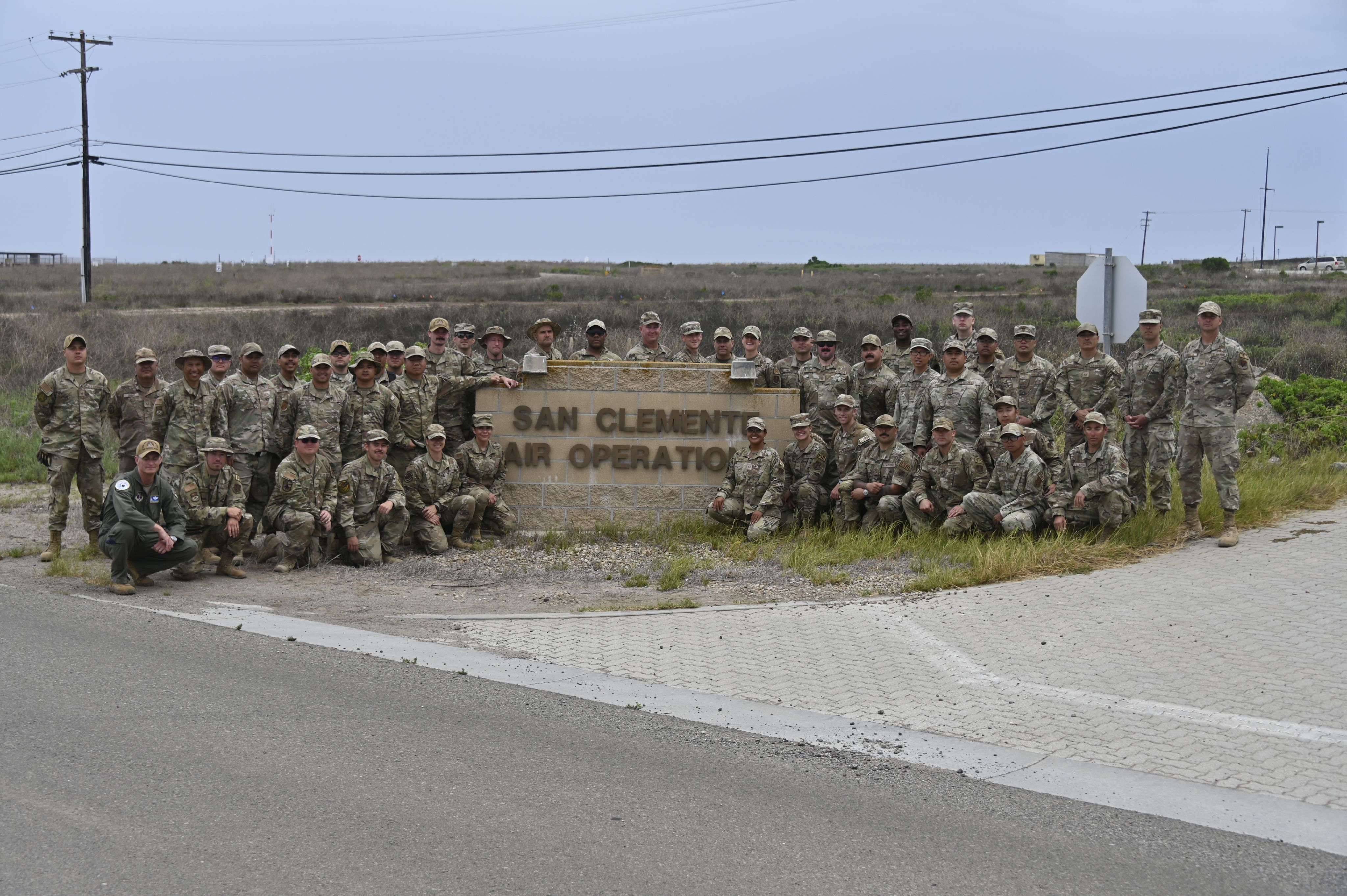

A loadmaster assigned to the 130th Rescue Squadron observes the runway for potential obstacles on a C-130 Aircraft while taxiing on the Naval Auxiliary Landing Field. (U.S. Air National Guard photo by Staff Sgt. Joseph Pagan)
A loadmaster assigned to the 130th Rescue Squadron observes the runway for potential obstacles on a C-130 Aircraft while taxiing on the Naval Auxiliary Landing Field. (U.S. Air National Guard photo by Staff Sgt. Joseph Pagan)

U.S. Air Force HC-130J Combat King II aircrew from the 130th Rescue Squadron, fly over March Air Force Base during the Grizzly Flag exercise. (U.S. Air National Guard photo by Staff Sgt. Duane Ramos)
U.S. Air Force HC-130J Combat King II aircrew from the 130th Rescue Squadron, fly over March Air Force Base during the Grizzly Flag exercise. (U.S. Air National Guard photo by Staff Sgt. Duane Ramos)

California National Guard Airmen board a C-130 Aircraft on March Air Reserve Base bound for San Clemente Island. (U.S. Air National Guard photo by Staff Sgt. Joseph Pagan)
California National Guard Airmen board a C-130 Aircraft on March Air Reserve Base bound for San Clemente Island. (U.S. Air National Guard photo by Staff Sgt. Joseph Pagan)

California Air National Guard Emergency Management service members from the 163d Attack Wing secure evidentiary soil samples at a simulated target location on San Clemente Island training grounds, Sept. 7, 2023 (U.S. Air National Guard photo by Staff Sgt. Joseph Pagan)
California Air National Guard Emergency Management service members from the 163d Attack Wing secure evidentiary soil samples at a simulated target location on San Clemente Island training grounds, Sept. 7, 2023 (U.S. Air National Guard photo by Staff Sgt. Joseph Pagan)

California National Guard Airmen pose for a photo at San Clemente Island upon completion of Grizzly Flag. (U.S. Air National Guard photo by Staff Sgt. Joseph Pagan)
California National Guard Airmen pose for a photo at San Clemente Island upon completing Grizzly Flag. (U.S. Air National Guard photo by Staff Sgt. Joseph Pagan)
